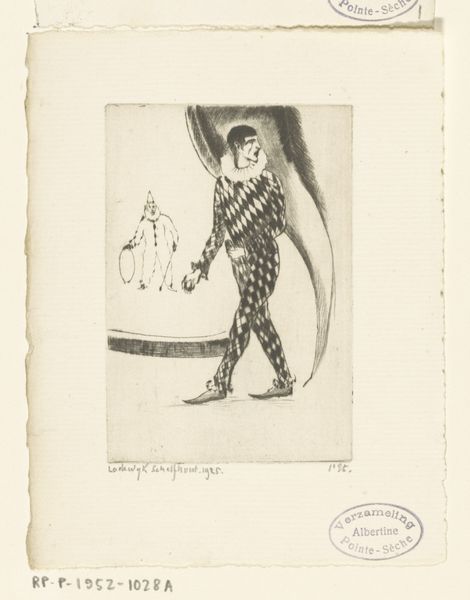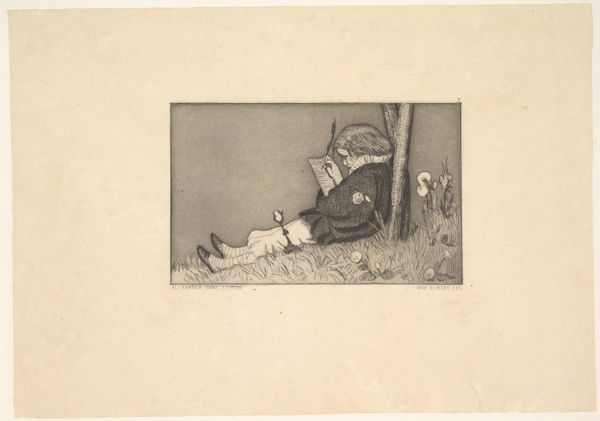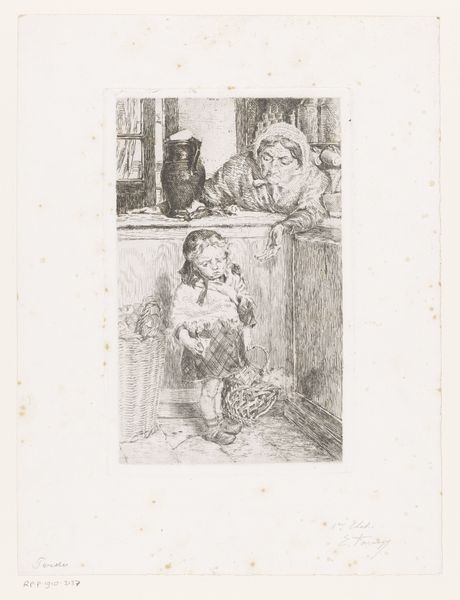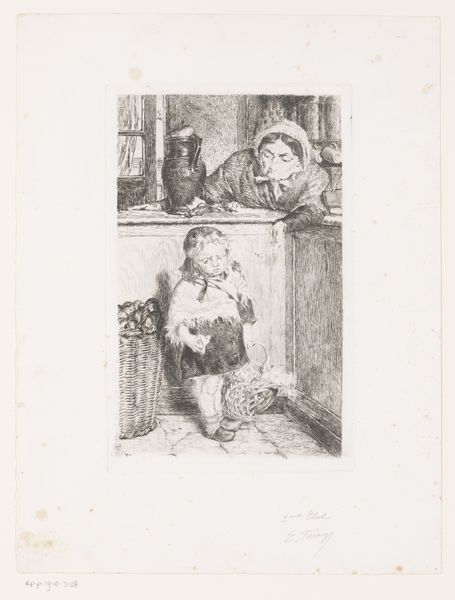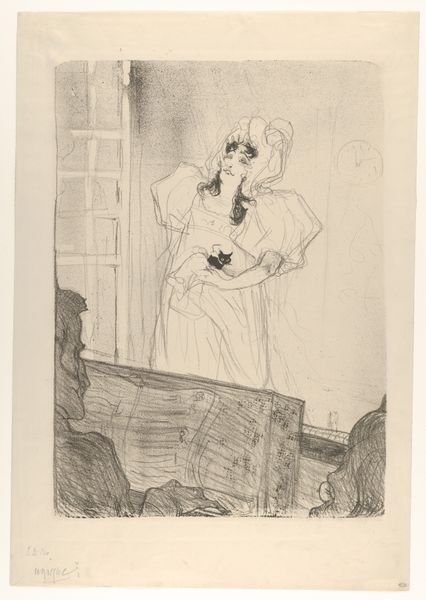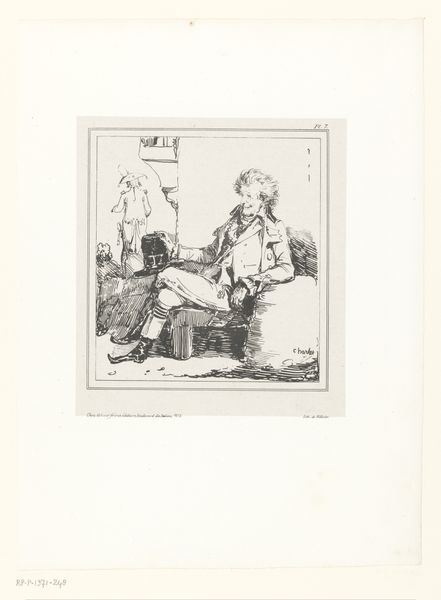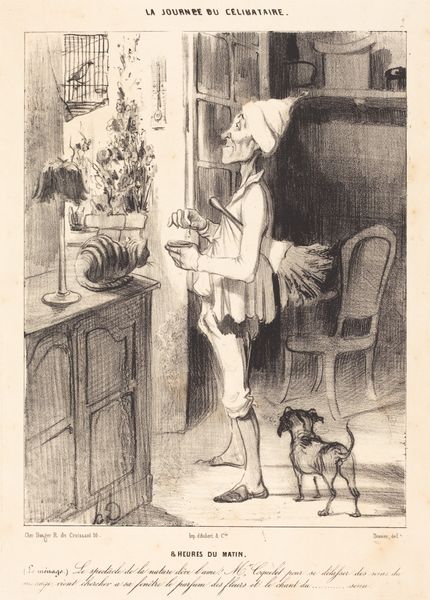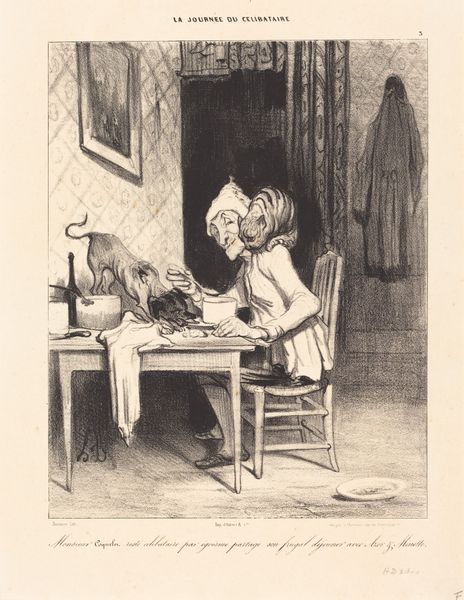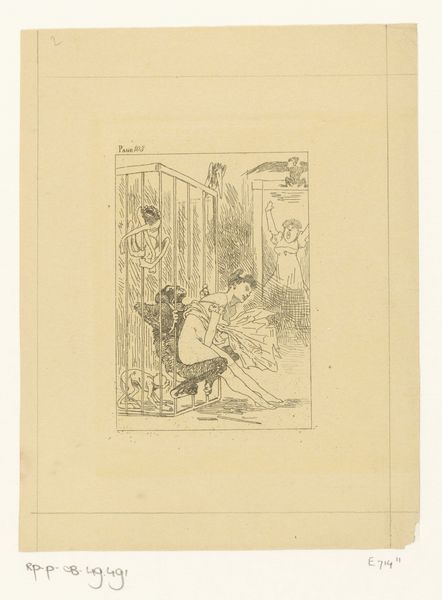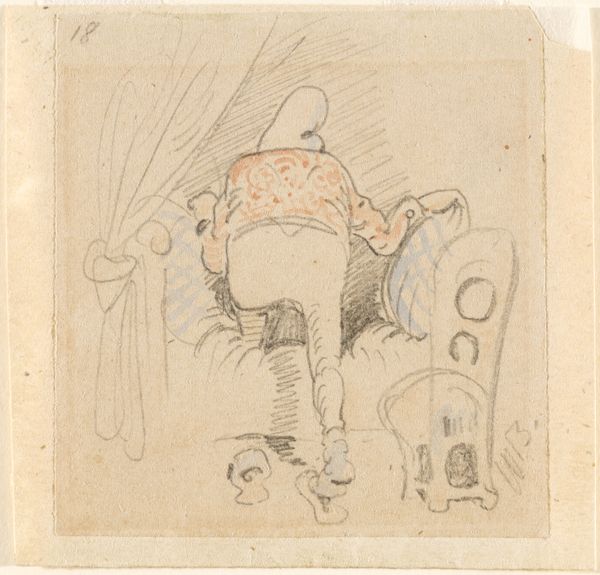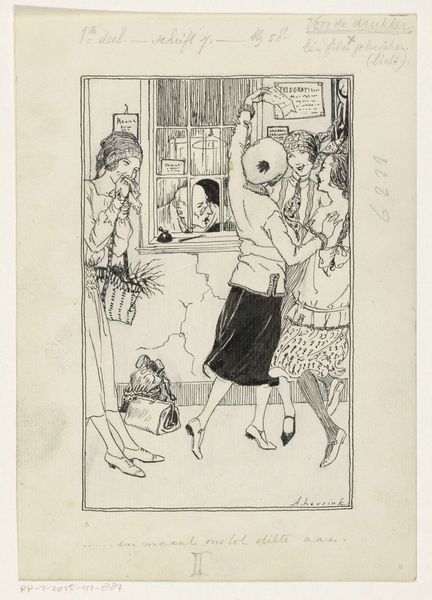
drawing, print, paper, ink
#
portrait
#
drawing
# print
#
figuration
#
paper
#
ink
#
genre-painting
#
modernism
Dimensions: height 100 mm, width 68 mm
Copyright: Rijks Museum: Open Domain
Editor: So, this is "Harlekijn," made by Lodewijk Schelfhout sometime between 1925 and 1930. It’s an ink drawing or print on paper, currently at the Rijksmuseum. I’m struck by how theatrical and slightly unsettling it feels. The harlequin figure seems both present and distant. What's your take? Curator: It’s a fascinating piece when viewed through its cultural lens. Consider the time; the interwar period, rife with social anxieties. How do you think the Harlequin, traditionally a comedic figure, functions here within that socio-political context? Editor: He feels…isolated? Not traditionally joyful. I guess the backdrop feels stark. Almost like he's trapped within the performance. Curator: Exactly. The harlequin, often a symbol of satire and social commentary, becomes complicated. We should remember that such figures also were romantic and poetic symbols during that time. Is Schelfhout commenting on the commodification of performance or the harlequin motif itself perhaps? Editor: That's an interesting point. I hadn't considered the potential critique of the art world or the theatrical world itself. The print medium… does that say anything about Schelfhout's intent and dissemination of meaning? Curator: Precisely. Prints make art more accessible. They democratize imagery. What power might that accessibility give Schelfhout during this time? Editor: Hmmm... Maybe the ability to reach a wider audience with a potentially critical or subversive message. Curator: Absolutely! Schelfhout offers us more than just a portrait. He presents a poignant commentary on performance, society, and the artist's role. What would you add now about the piece to this description? Editor: I’d definitely add context about the interwar period and mention the democratizing effect of the print and maybe I’d push a bit more on the sad feeling the harlequin suggests to me! It’s interesting to consider that this Harlequin could reflect that time of transition and societal questions. Curator: Well articulated, those reflections help make the work much richer.
Comments
No comments
Be the first to comment and join the conversation on the ultimate creative platform.
